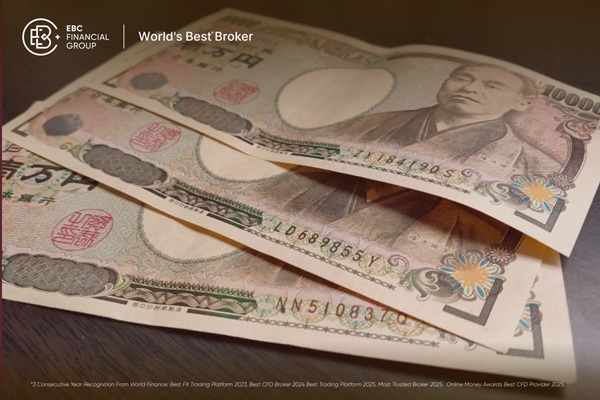Intraday trading remains one of the market’s most active and rewarding methods for short-term profit. Unlike long-term investing, day trading focuses on capturing daily price fluctuations through precision, timing, and disciplined execution.
This guide outlines 10 actionable strategies that can help traders improve success rates, manage risk effectively, and adapt to today’s fast-moving markets.
What Is Intraday Trading?
Intraday or day trading involves opening and closing positions within the same day. The goal is to profit from short-term price fluctuations in stocks, indices, forex, commodities, or derivatives.

Unlike swing or positional trading, intraday traders don't hold positions overnight, which limits exposure to overnight risk.
It requires technical analysis, chart reading, and news awareness to identify opportunities. The key to success lies in liquidity, timing, and capital control, not speculation or luck.
Is It Possible to Make Money in Intraday Trading?
Yes, consistent profits are achievable but only with discipline, preparation, and structured risk management. Most losses come from emotional trading, poor planning, or over-leverage. Intraday trading is a skill-based pursuit, not a gamble.
By following our proven tips and techniques you can improve your odds of success and reduce unnecessary losses.
10 Tips on How to Make Money in Intraday Trading

1. Choose Liquid Stocks for Better Execution
Liquidity is crucial in intraday trading. A liquid stock allows traders to enter and exit trades quickly without significantly affecting the price. These stocks have higher trading volumes, tighter bid-ask spreads, and more accurate price discovery.
Examples of liquid instruments include:
Large-cap stocks like Apple, Reliance Industries, or TCS
Index-based ETFs such as SPY or NIFTYBEES
Major currency pairs like EUR/USD or USD/JPY
Avoid illiquid or low-volume stocks, as they can result in slippage and make it harder to close positions at your desired price.
2. Set a Daily Profit and Loss Limit
Next, set clear daily profit targets and maximum loss limits. Once you hit your limit, stop trading for the day. This helps prevent emotional trading and minimises damage during volatile sessions.
For example, if your daily loss limit is 2% of your capital, stop trading once you reach that threshold, even if you believe the next trade could be a winner.
This approach promotes consistency and longevity in your trading journey.
3. Follow the Trend, Don't Fight It
A common mistake among intraday traders is trying to predict market reversals. Instead, trade with the trend. Use moving averages, trendlines, and volume indicators to identify the market's direction. Trend-following increases the probability of winning trades.
For example, if the market is in an uptrend and the price pulls back to a support level, that could be a buying opportunity. Don't go against the momentum unless there's a strong technical signal and confirmation.
4. Use Stop Loss Orders to Limit Risk
A stop loss is an essential risk management tool that automatically closes a trade if the price moves against you. Always set a stop loss before entering a position. Never assume the market will come back in your favour.
Without a stop loss, an intraday loss can quickly turn massive. Determine your risks per trade (e.g., 1% of capital) and place the stop accordingly based on technical support/resistance. This discipline can protect your capital over the long run.
5. Learn to Read Charts and Patterns

Technical analysis is your edge. Learn to identify:
Flags and pennants
Double tops/bottoms
Head and shoulders
Breakouts and breakdowns
Combine with volume and RSI to validate entry and exit points.
6. Choose the Right Trading Strategy
There's no one-size-fits-all strategy in intraday trading. You must find a method that suits your personality, risk tolerance, and trading schedule.
Popular intraday strategies include:
Breakout trading: Buying when the price breaks above resistance or selling below the support.
Scalping: Making multiple small trades daily to profit from minor price movements.
Momentum trading: Entering trades based on strong volume and price trends.
Reversal Trading: Identifying overbought or oversold conditions for potential price reversals.
Backtest your strategy and follow a consistent plan. Avoid switching strategies too frequently based on short-term outcomes.
7. Time Your Trades with Market Sessions
Timing remains critical in intraday trading because different sessions produce distinct volatility and liquidity patterns:
Opening window (~9:15 AM–10:30 AM IST / 9:30 AM–11:00 AM EST): Volatility and volume are highest as markets react to overnight news and global cues. This is often the best stretch for breakout-oriented setups.
Mid-session (~10:30 AM–1:30 PM IST / ~11:30 AM–2:30 PM EST): Liquidity remains but markets tend to settle into range-bound or consolidative behaviour. This session may suit trend-followers who prefer less aggressive movement.
Closing window (~2:30 PM–3:30 PM IST / ~3:00 PM–4:00 PM EST): Activity ramps up again as traders close positions or adjust ahead of market close. These moves can trigger final swings or reversals.
Tip: Align your strategy to the session type, use breakouts early, tread carefully during mid-day, and tighten risk ahead of the close.
8. Avoid Overtrading and Revenge Trading
Overtrading is the enemy of discipline. It usually happens when traders get emotional after a loss or try to chase profits without solid setups. This leads to bad decisions, increased costs, and massive losses.
Stick to a defined number of trades per day. Focus on quality over quantity. After a losing streak, take a break instead of doubling down to recover quickly as this is known as revenge trading and is one of the fastest ways to blow up an account.
Self-control is a core trait of successful intraday traders.
9. Keep a Trading Journal for Improvement
A trading journal helps you track performance, identify patterns, and learn from successes and failures. Record each trade with details like:
Entry and exit price
Time of trade
Strategy used
Reason for entry
Outcome (profit/loss)
What went right or wrong
Review your journal weekly to evaluate your consistency and make necessary adjustments. It's one of the most powerful tools for self-improvement and trading mastery.
10. Stay Updated with Market News
Intraday traders must stay up-to-date on economic events, earnings announcements, and breaking news. These can lead to sudden price swings and impact your trades.
Use an economic calendar to track key events such as:
Interest rate decisions
Inflation data
Jobs reports
Corporate earnings
Trading during high-impact news releases can be risky. Many traders prefer to avoid trading during these periods unless they specialise in news-based strategies.
Also, stay informed on overall market sentiment whether bullish or bearish which can influence price action across sectors.
Is Intraday Trading Right for You?
Intraday trading isn't for everyone. It demands time, focus, and emotional control. If you enjoy analysing charts, reacting quickly, and handling high-pressure environments, it could be a good fit.
However, if you prefer a slower pace or have a full-time job, consider swing trading or long-term investing instead. Remember, the goal is to find a trading style that matches your lifestyle and psychology.
Risk Management Strategies
Even the best timing and analysis mean little without protecting your capital as this is where effective risk management becomes essential.
| Strategy |
Purpose |
Example |
| Stop-Loss Orders |
Limit potential losses automatically |
Set a stop 5% below entry price |
| Diversification |
Spread exposure across asset classes |
Hold equities, bonds, and gold |
| Position Sizing |
Control risk per trade |
Risk only 1–2% of portfolio per trade |
| Hedging |
Offset risk with opposite positions |
Long stock index, short futures |
| Risk-Reward Ratio |
Ensure reward outweighs risk |
Target at least 2:1 reward-to-risk |
Future Outlook of Intraday Trading (2026 and Beyond)

Intraday trading is evolving rapidly as technology, regulation, and global participation reshape how markets operate. By 2026 and beyond, traders can expect deeper integration of automation and data-driven decision-making across all asset classes.
Rise of AI-Assisted Trading Bots: Advanced algorithms will handle real-time execution, volatility assessment, and adaptive position sizing, giving traders analytical precision once reserved for institutions.
Algorithmic Order Flow Tracking: Retail platforms are beginning to offer institutional-grade tools that monitor liquidity, order depth, and execution speed, bridging the gap between professional and individual traders.
Growing Retail Participation: Retail trading activity continues to expand across Asia and the U.S., driven by mobile trading apps, lower commissions, and increased financial literacy.
Human Discretion Remains Vital: Despite automation, data analytics and risk models still require human interpretation. Emotional intelligence and judgment in volatile or news-driven environments will remain a trader’s strongest edge.
In short, the future of intraday trading lies in the synergy between human strategy and machine precision; those who master both will lead the next generation of market success.
Frequently Asked Questions (FAQ)
1. Can beginners make money in intraday trading?
Yes, you can make money in intraday trading with discipline and proper risk management.
2. Is intraday trading still profitable in 2025?
Yes, but intraday trading success depends on strategy and control, not luck.
3. Do AI tools replace human traders?
No, AI only assists, but human judgment still matters.
4. Is intraday trading risky?
Yes, intraday trading is risky but risks can be managed with stop losses and limits.
5. Can I start intraday trading with small capital?
Yes, you can start intraday trading with small capital but use proper sizing and avoid over-leverage.
Conclusion
Intraday trading in 2025 demands discipline, speed, and strategic thinking. Success comes from combining technical skill with emotional control, not chasing quick wins.
Stay informed, manage risk relentlessly, and treat trading as a business because in today’s markets, consistency is your greatest edge.
Disclaimer: This material is for general information purposes only and is not intended as (and should not be considered to be) financial, investment or other advice on which reliance should be placed. No opinion given in the material constitutes a recommendation by EBC or the author that any particular investment, security, transaction or investment strategy is suitable for any specific person.

























